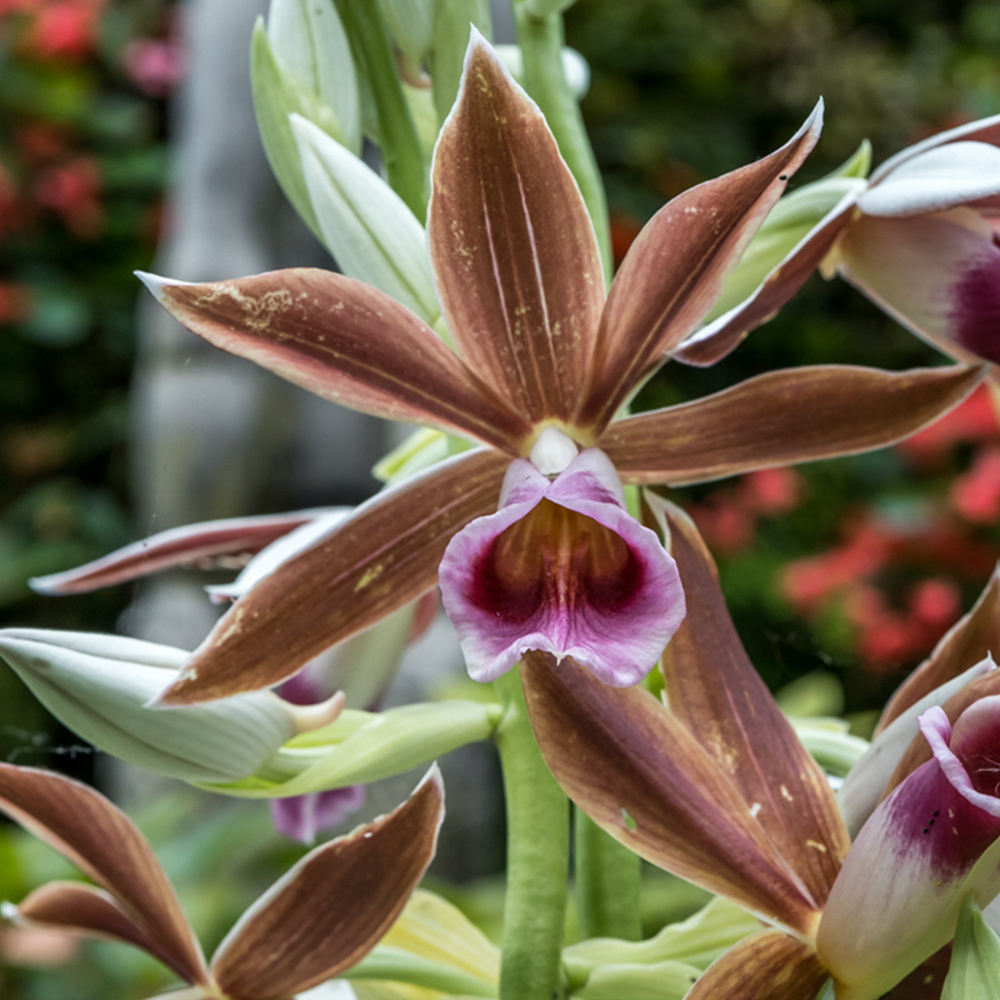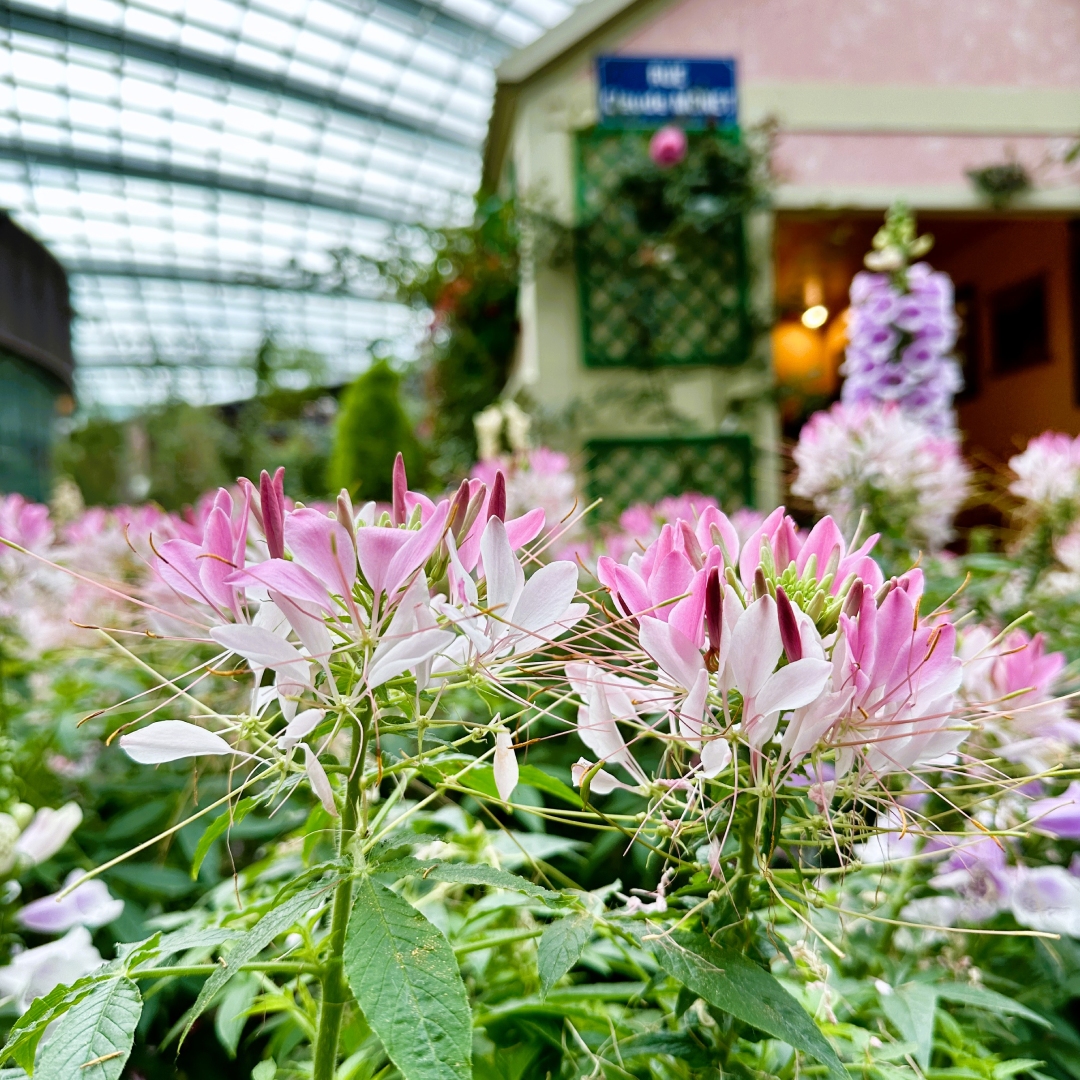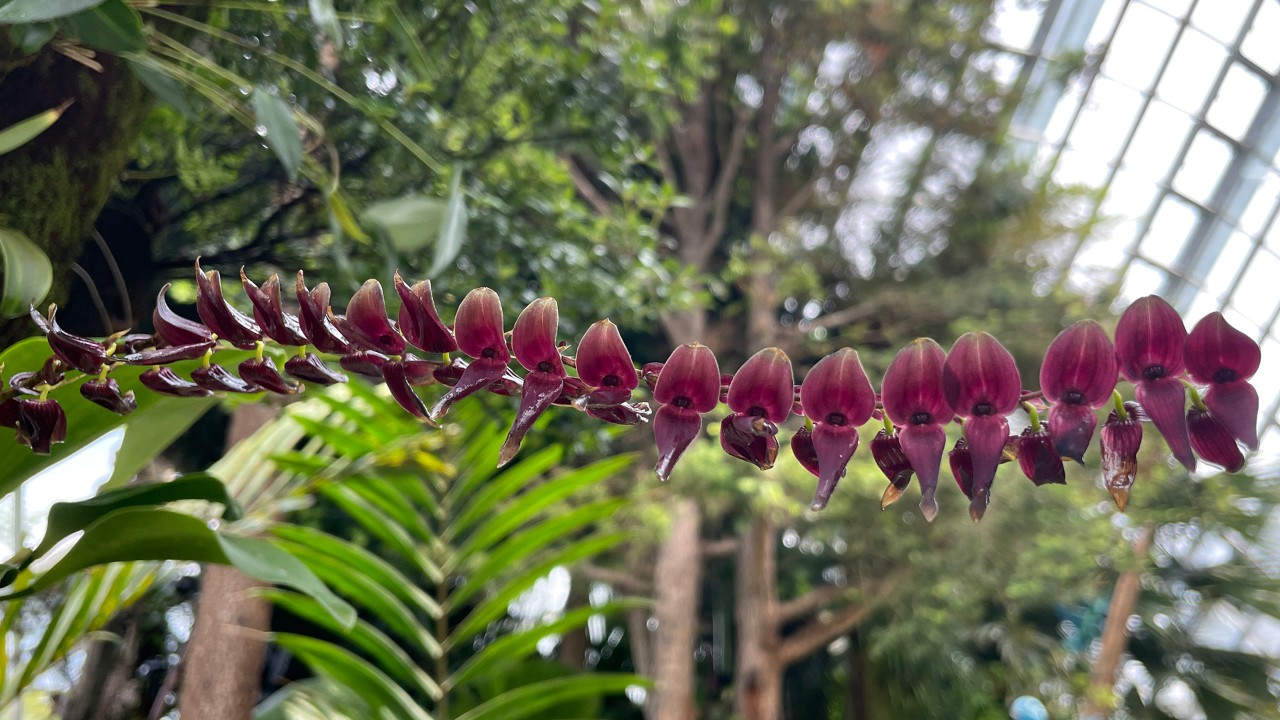
Stelis might be a lesser-known genus of New World orchids, but it does contain some fascinating surprises! One of the largest orchid genera encompassing at least ~1050 species in its broadest definition, the genus Stelis comprises about 4% of the ~25,000 known orchid species. Four percent may seem like a small percentage until you consider the fact that there are over 800 other genera in the orchid family (Orchidaceae)!
Native to the tropical Americas, from southern Florida through much of Central and South America, Stelis is a largely epiphytic genus, growing on tree trunks and branches, but some species may also be terrestrial or lithophytic, growing on rocks. The name Stelis comes from the Greek word for ‘small pillar’, perhaps in reference to the epiphytic creeping habit of many Stelis species which send up column-like ramicauls (thick stems each with a single leaf) in single file along a branch. Stelis was also a Greek name for a type of mistletoe and may also have been proposed as a name for this orchid genus for its mistletoe-like epiphytic habit, though Stelis orchids are not parasitic as mistletoes are and do not harm their host trees by feeding off their sap, but merely live on top of the host trees.
For all lovers of Dendrobiums, Phalaenopsis, Oncidium and other common supermarket orchid genera (no judgement here – there are often some amazing potted orchids for sale right next to the produce section!), you may have never heard of the Stelis genus till today because many Stelis species are ‘miniature orchids’ producing small to tiny flowers around 0.5cm in diameter, mostly in equally eye-catching shades of cream, green, or dull purple!
Today’s featured Stelis, Stelis maxima, is a cool growing, moderately sized orchid native to the high-altitude dwarf forests of Venuzuela, Colombia, Ecuador, and Peru, from around 1700 to 3200m in elevation. This species is an exception to those aforementioned Stelis floral characteristics! As you might guess from its species name or specific epithet, maxima, it has one of the largest flowers of the genus — over 2cm in length! — and its 15-25cm long floral spike may hold over 40 flowers in an odd purplish-brown hue!
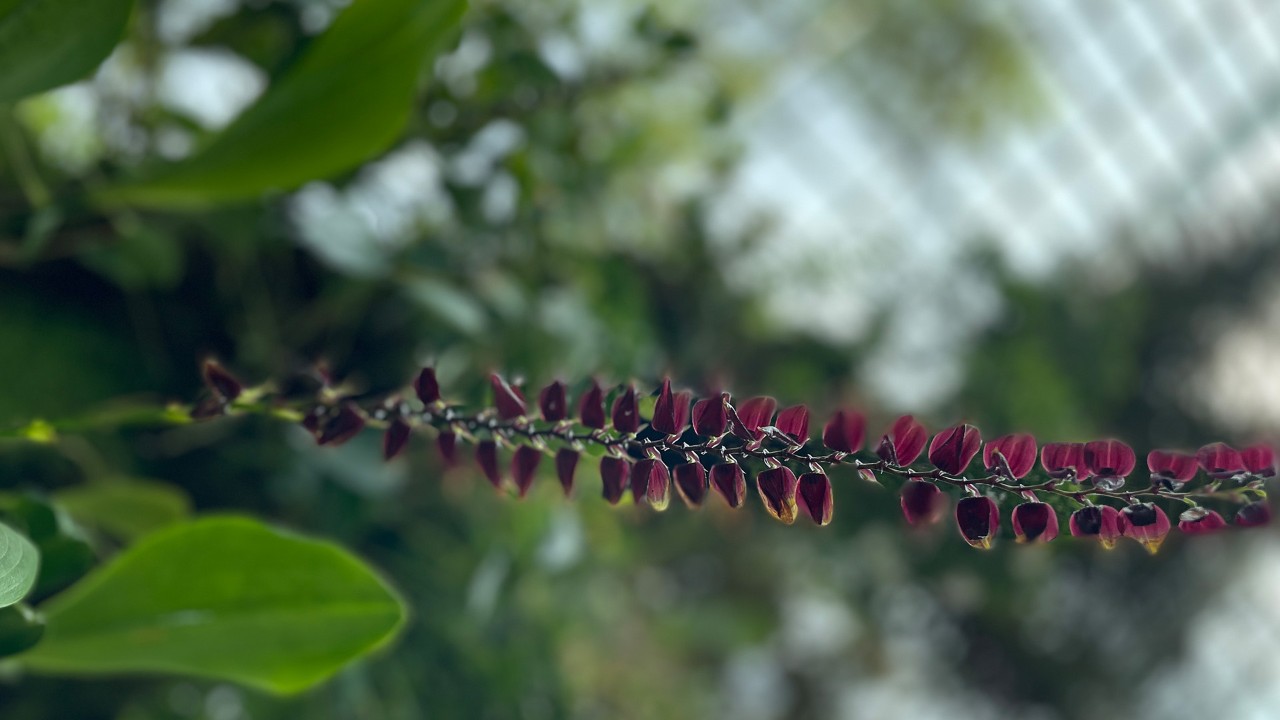 Seen from below, the alternate branching structure and numerous flowers of a S. maxima inflorescence can be fully appreciated.
Seen from below, the alternate branching structure and numerous flowers of a S. maxima inflorescence can be fully appreciated.
Many Stelis species bear three larger sepals that might be mistaken for petals, but S. maxima has its two topmost sepals fused into a single large structure called a synsepal. The translucent dividing line between the fused sepals is quite prominent, unlike the minute, inconspicuous petals and pointed column at the center of the flower. And that lip petal or labellum, so frilly, lobed, large, and brightly colored in other orchids? It’s almost invisible deep in the center of the flower and pointing upward at the 12 o’clock position, in this right-side up (non-resupinate) species, as opposed to the familiar, 6 o’clock, downward pointing lip position in most other familiar orchid genera, that twist as the bloom to bear their open flowers upside-down (resupinate). Check out the twisted flower stalks or pedicels the next time you admire a blooming Dendrobium or Phalaenopsis to view evidence of this twist in action!
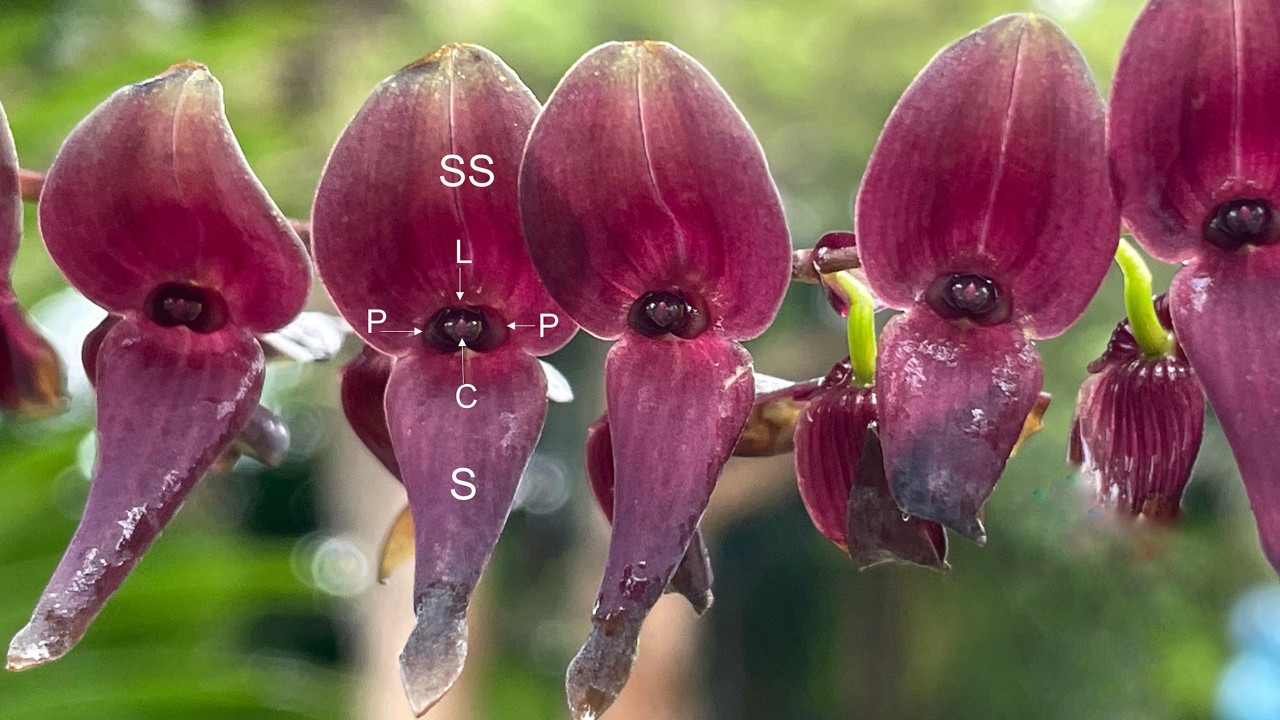 For those hunting for the lip petal/labellum answer, here it is! Figure labels: SS = synsepal: two sepals fused into a single structure; S = sepal; P = petal; L = lip petal/labellum, and C = column (the structure bearing the fused male and female reproductive parts). Did you guess correctly?
For those hunting for the lip petal/labellum answer, here it is! Figure labels: SS = synsepal: two sepals fused into a single structure; S = sepal; P = petal; L = lip petal/labellum, and C = column (the structure bearing the fused male and female reproductive parts). Did you guess correctly?
Stelis maxima doesn’t bloom often in Cloud Forest; in fact, this is one of the few times we’ve seen this plant in bloom, so come admire it in person, growing on one of the trees on the left side of the path, directly after the end of the bridge as you make your way up to the lift lobby of Cloud Forest’s mountain!
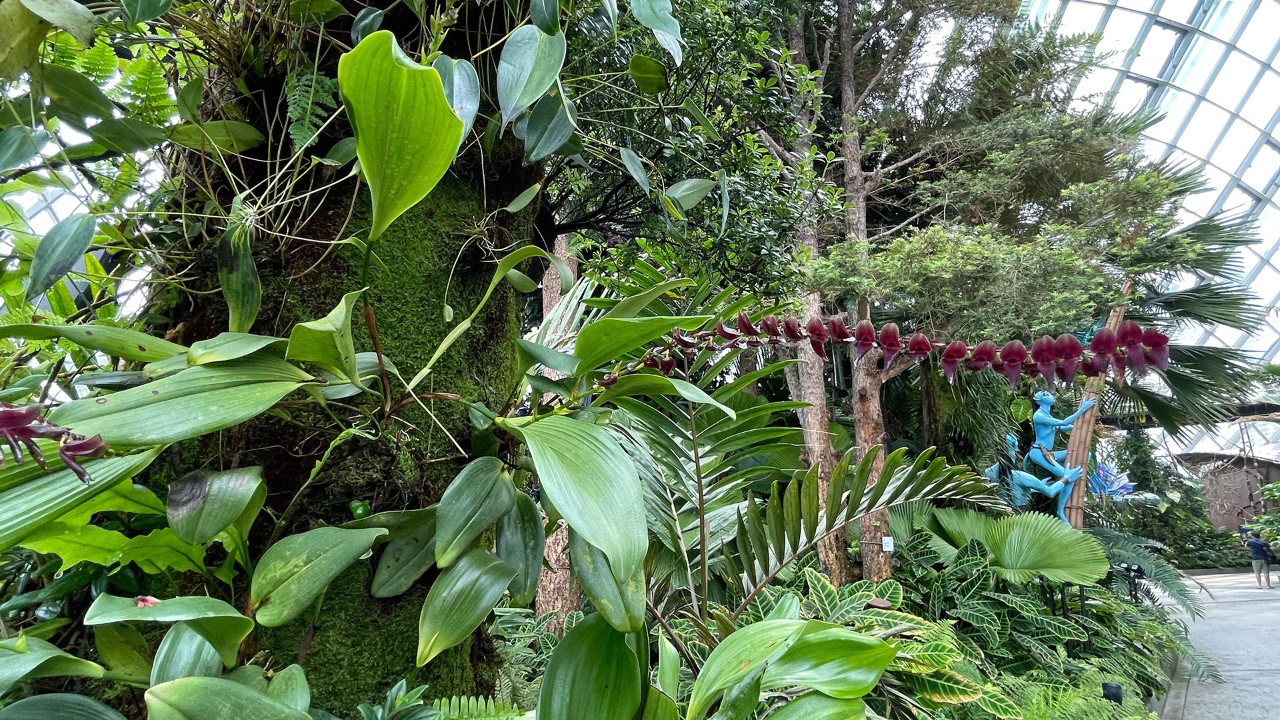
Written by: Janelle Jung, Senior Researcher (Research and Horticulture)
A transplanted pake (Hawai'i-born Chinese), she's finding her own Singaporean roots. Every plant has a story, and Janelle helps discover and share these with colleagues and guests, hoping to spark a mutual plant passion! Ask her what plant she named her cat after!
/1920x1080px-pride-of-burma-1.jpg)
